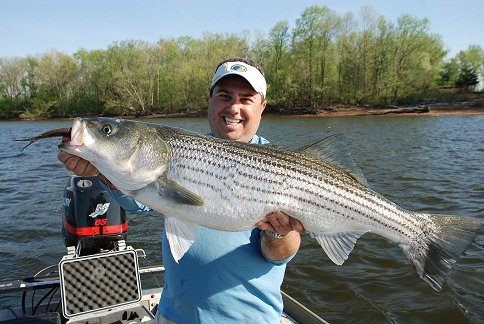Deep Diving Plugs for Spring Stripers
- Details
- Category: Fishing Articles
- Published: Thursday, 19 April 2012 20:05
- Written by Capt. Brian Rice
- Hits: 23672
Saltwater Fishin’ Vol 4, No. 4
Pro Recommends Deep Diving Plugs for Spring Stripers
Capt. Brian Rice uses light tackle to troll for early season striped bass - Here’s how he does it
Captain Brian Rice ran the Jersey Devil, a 29’ Yamaha-powered Contender®, from its slip in the Nevasink River down into Raritan Bay, a large embayment nestled between the tip of Sandy Hook, New Jersey and Staten Island, New York. He was headed toward the mouth of the Raritan River to an area of flats surrounding the main shipping channels. Upon reaching his destination, he slowed the boat, and the depth finder lit up with pods of striped bass hugging the bottom in 20-to-30-feet of water. This area is part of the larger estuary complex that is home to the Hudson River stock of striped bass, which also includes places such as Jamaica Bay and Western Long Island Sound. It is similar to other estuary complexes associated with the Chesapeake and Delaware Bay stocks of stripers, and they are all great places to fish for linesiders in the spring months.

Mate Jim “Peaches” Massimino, Jr. shows off a particularly large spring bass that could resist a Stretch plug.
The overwhelming majority of the East Coast striped bass population is comprised of cohorts from those three major spawning stocks. READ MORE HERE
.



 The Striped Bass fishery along the east coast has rebounded
over the years. Pollution and commercial
fishing once caused a dramatic decrease in the total number of spawning fish
entering the fresh water river systems up and down the eastern seaboard.
Conservation efforts have allowed this fishery to explode.
The Striped Bass fishery along the east coast has rebounded
over the years. Pollution and commercial
fishing once caused a dramatic decrease in the total number of spawning fish
entering the fresh water river systems up and down the eastern seaboard.
Conservation efforts have allowed this fishery to explode.







